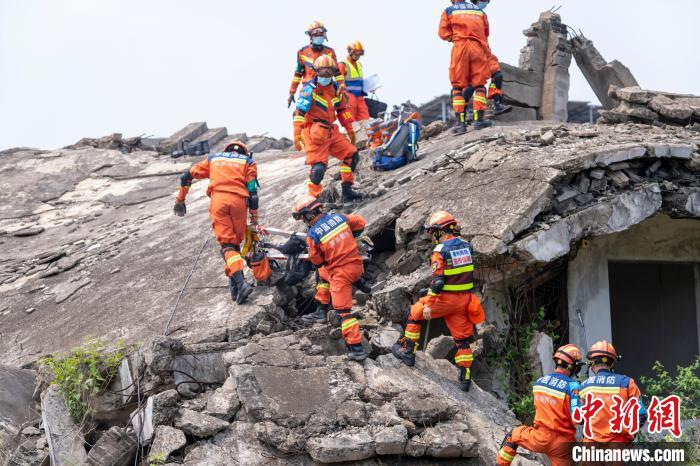
The Department of Emergency Management of Hainan Province, Hainan Fire and Rescue Brigade, and Hainan Earthquake Administration jointly carried out a cross-regional earthquake rescue drill in real scenarios in Haikou, Hainan, China on April 29, targeting at improving joint handling capability of earthquake rescue operations.
The drill was set up with the following scenario: At 4:55 am on April 29, a 7.0 magnitude earthquake with epicenter 17 kilometers deep occurred in a place of Hainan Province. The violent tremors led to collapse and damage of many houses, resulting in severe disruption of traffic and roads and many people in trap.
At 5:00, the command center of Hainan Fire and Rescue Brigade quickly issued an order of cross-regional reinforcement to urgently mobilize rescue forces. On-site operation was carried out through coordinated efforts of multiple departments. Units such as the public security, medical services, power supply and communications responded simultaneously and arrived at the scene to assist. Relevant leaders and experts from the provincial emergency management department and the provincial earthquake administration were present to provide professional guidance.
In the drill, a total of 144 fire engines and 590 fire and rescue personnel, including two heavy-duty earthquake rescue teams and three light-duty earthquake rescue teams from Haikou, Sanya, Yangpu Economic Development Zone, Danzhou, Qionghai and Dongfang Rescue District, rushed to the rescue site.
The drill consisted of three core parts: equipment inspection, marching on foot, and on-site practical operations. During the part of equipment inspection, each professional team orderly set up the command center after arriving at the designated assembly point and on-site inspection of the personnel, equipment and supplies of the professional team were made. During the part of marching on foot, rescue teams needed to traverse about 2.6 kilometers of roads with complicated conditions, including 0.2 kilometers of beach and ditch, 0.6 kilometers of urban road and 1.8 kilometers of rural path, simulating the real complicated and variable rescue environment after an earthquake, and testing the team's ability of rapid mobility in various terrains. During the part of on-site practical operation, 8 types and 18 practical operation subjects were designed, including lateral demolition in a narrow space, safe downward demolition, three-dimensional support, and rope rescue. The drill comprehensively tested the team's professional skills and emergency response level in complex rescue scenarios.
Practical training on emergency command communication support under scenarios of disconnected roads, internet and power supply was carried out as well. Long-endurance UAV with voice base stations and satellite portable stations were used to ensure smooth transmission of voice and images. Refined and specialized guarantees of material supply during the whole rescue process, equipment maintenance, clothing, food, accommodation & medical care for logistics support were achieved.
Head of the drill’s front commanding center said that this cross-regional earthquake rescue practical operation drill was a concentrated test and improvement of the command force system of the Hainan provincial fire and rescue force. The drill helped enhance the joint handling capability for earthquake rescue.

